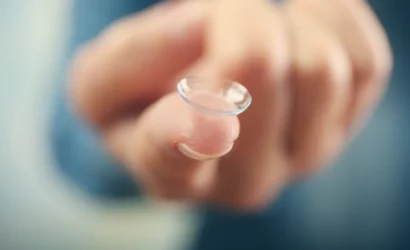Your Vision is our main goal
We develop products that can satisfy your needs and improve quality of lifeAll we see is the result of the light reflected from the objects, passing through the pupils, guided, processed and projected onto the surface of the retina. The retina is able to perceive shapes and colors and to give precise and accurate information of the space that surrounds us. All the information gathered by the retina is then processed by the brain.
We can define the brain as the true organ of vision
he light that is reflected from an object crosses the conjunctiva and the cornea passes through the anterior chamber and pupil. Arriving at the lens, it is "collected" and then reaches the retina which, once the information is processed, transfers it to the optic nerve, which then transfers it to the brain which interprets and forms the image that we finally see.
An eye without visual defects focuses on the retina objects at various distances thanks to the accommodation, the elasticity of the lens.
Accommodation is always in action when objects are not perfectly focused then blurred on the retina.
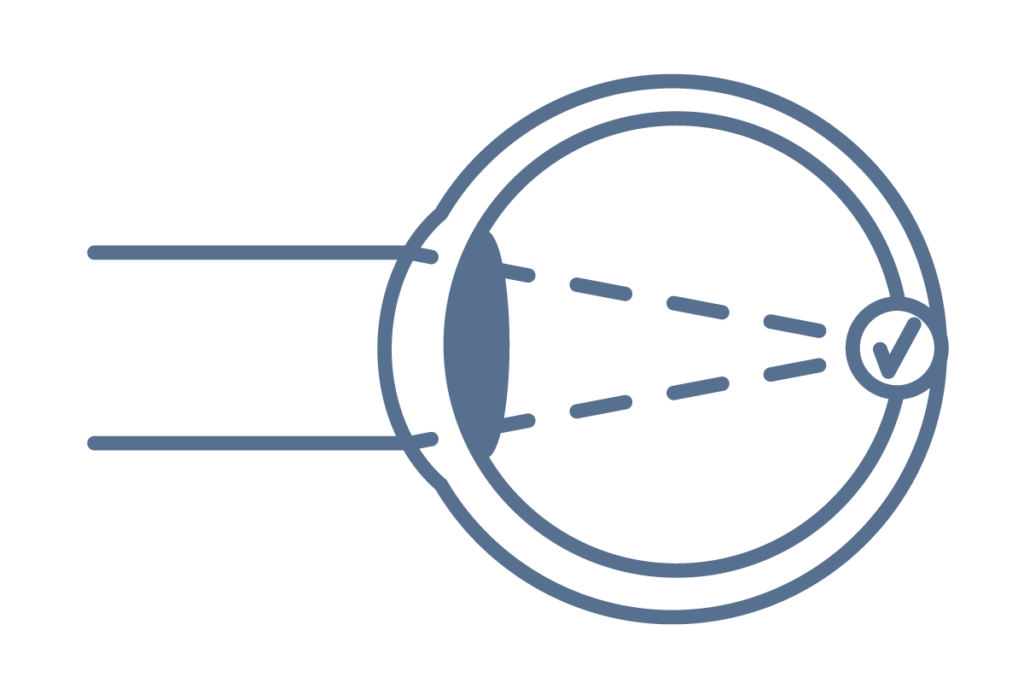
Common eye disorders
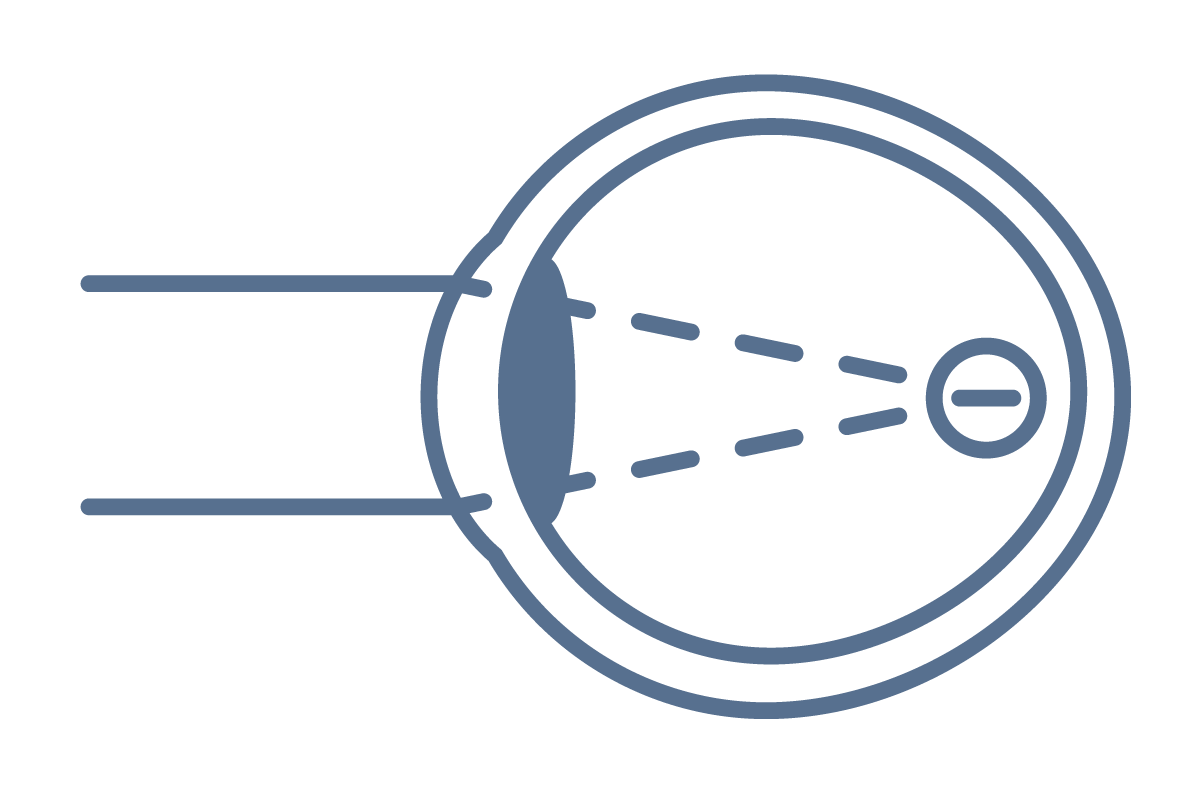
Myopia
Myopia or Near-sightedness is generally caused by an excessive length of the eye or, to a lesser extent, by a cornea or lens that is too curved.
Light rays from distant objects are focused on a plane anterior to the retina, on which blurred and diffuse images are formed.
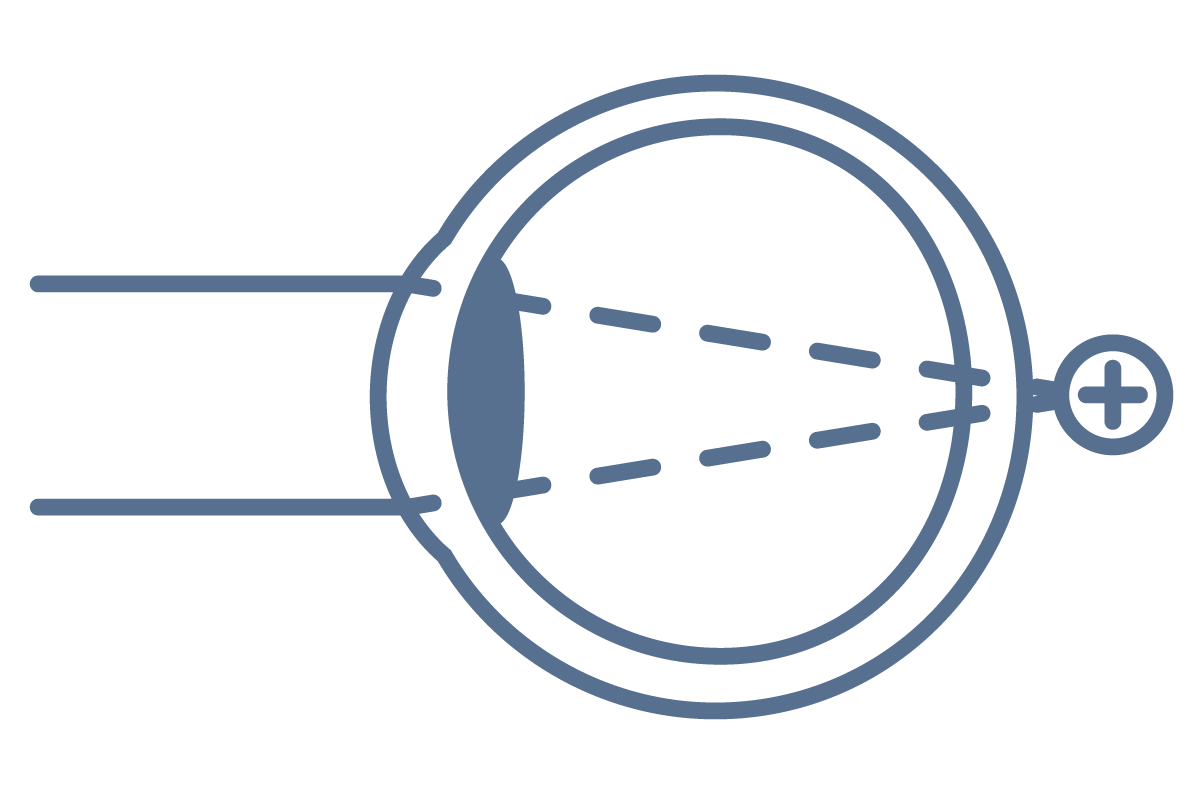
Hyperopia
Hyperopia or far-sightedness is usually the result of an excessively flat cornea or a too short eyeball.
Light rays from distant objects are focused behind the retina forming a blurry image at the retinal level.
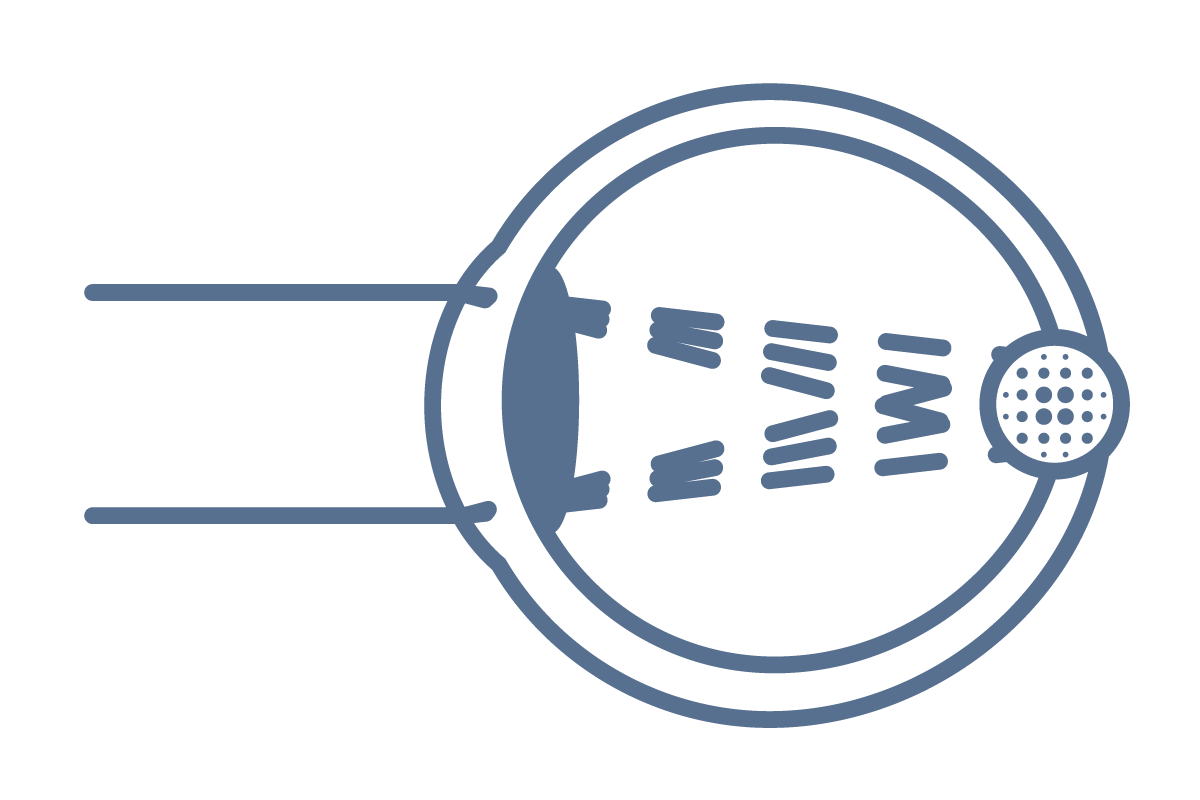
Astigmatism
Astigmatism is a very common optical condition caused by a peculiar topographical conformation of the cornea, which has a non-spherical appearance but similar to a rugby ball with a more curved meridian (the most flattened one) and one with less curvature, perpendicular to it.
The retinal image is therefore not formed in a narrow circle on the retina, but along a blurred vision range.
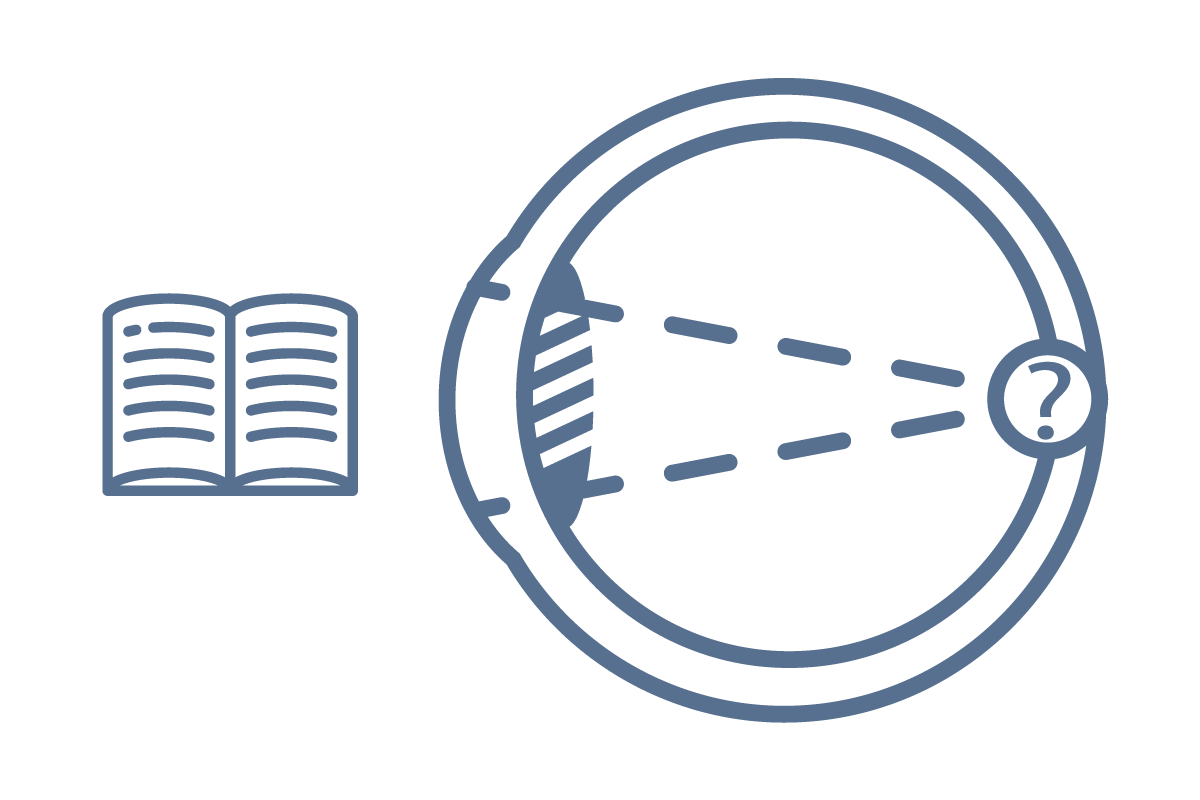
Presbyopia
Presbyopia , that is the reduced accommodation capacity over the years, is not considered a true visual defect but a physiological phenomenon; around the age of 40-45 the eye begins to struggle to focus and the near point of comfortable near vision begins to move away.
Contact Lenses
effectively correct visual defectsContact lenses are medical devices that nowadays are able to correct refractive errors such as myopia, hyperopia and astigmatism.
When worn they adhere to the anterior segment via the tear film layer. With each blink, the lens has a small movement that allows the tear to deliver oxygen and lubrication to the underlying cornea.
Soft contact lenses, are the most used, and are made of flexible polymers, silicones or other similar materials ensuring good wettability, passage of oxygen and general comfort. They adapt to the shape of the anterior segment and maintain their placement, therefore are optimal for sports and active social life.
The recommended replacement schedule of this Medical Device can vary from one day to a month. Shorter replacement intervals increase safety, hygiene and comfort.
Rigid contact lenses are often indicated for complex visual disorders, irregular corneas and re-shaping of the cornea. The materials, the dimensions of the lenses and the geometries may vary according to the corrective purpose and the needs of use.
Contact lenses are a safe and comfortable alternative to prescription glasses
Contact lenses do not fog up, do not collect moisture and are ideal for outdoor activities
They guarantee a better peripheral vision, a better perception of distances and a real size of objects
Contact lenses can be of soft or rigid material, of various sizes, with different methods of use
40+
Presbyopia is a completely natural condition.
The lens begins to lose elasticity, flexibility, reducing the accommodative capacity, and as a consequence there is more difficulty in passing focus from afar to closer objects.
Presbyopia can be compensated for with "reading" glasses or prescription glasses that may compensate to the presence of presbyopia in association with other ametropias.
Contact lenses are a safe and comfortable alternative to prescription glasses
In recent years, the combination of new geometries with soft or gas permeable materials already used for the correction of ametropias such as myopia, hyperopia and astigmatism has made it possible to compensate very well both initial presbyopia and consolidated presbyopia. Also when in combination with visual defects already present or appeared with the advent of presbyopia.
Digital Eye Strain
Some jobs require periodic eye check-ups (e.g. video terminals users), but too many people, partucularly youngsters, stare at digital devices such as screens of tablets and smartphones for many hours a day at close range without any sort of control nor professional advice.
Important tips
Development & Well-being
LACHRYCEUTICALS
In the last decade many researchers and many scientific publications have directed their attention to better understand which mechanisms influence the normal physiological development of the eyeball. A physiologically normal bulb reduces the causes of the onset of ametropias and tends to remain effective and healthy.
A new approach foresees that a soft contact lens, with unique characteristics, can be the vehicle and union between the optical and biological functions, using the same approach that is used in the world ofsupplements, by acting on the natural metabolic cycles, in order to favor them.
Lachryceuticals (amino acids, vitamins, polysaccharides, etc.) are inserted inside the matrix of the contact lens during the manufacturing process and then, thanks to the patented controlled release, delivered from the contact lens guaranteeing the bioavailability of these substances to the eye for the entire wearing period.

